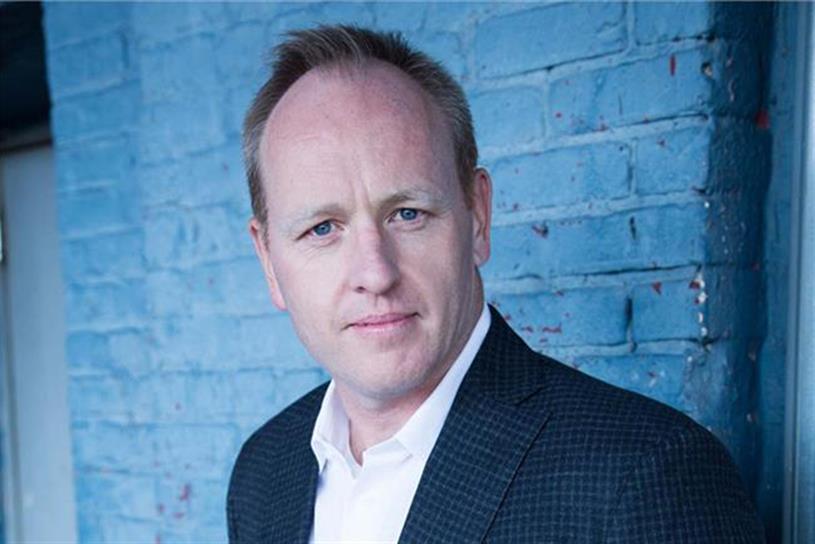GroupM North America CEO Tim Castree on Reigniting Brand Growth for Clients

Tim Castree sat for an interview with Michael Farmer on June 4, 2019, at a “pre-Cannes” rooftop celebration for members of the press and senior executives at GroupM’s headquarters at 3 World Trade Center. He outlined GroupM North America’s strategic priorities for the coming years. Castree (pictured above) has had a multi-faceted senior executive career with creative agencies (head of Account Management at BBH New York, Managing Partner at George Patterson Partners in Sydney and CEO of Leo Burnett Australia) and at media agencies (COO Mediavest USA, CEO Wavemaker and CEO GroupM North America).
Michael Farmer: Tim, you’ve seen marketing communication evolve from many perspectives over the past 20 years -- in Australia, in New York, with creative agencies and now with global media agencies. What is the state of play in the industry? What’s most on your mind?
Tim Castree: There are many challenges in the industry, of course, but to my thinking the highest order problem is that our clients are struggling to reignite brand and business growth. This, more than anything else, shapes their decisions and affects our relationships with them. Our clients grew after WWII to the late ‘70s, driven principally by the growing spending power of middle-class Americans -- the famed Baby Boomers. Growth continued for other reasons up to 2001, but the dot-com crash and the 2008 financial crisis killed middle-class spending growth. On top of this, we saw a generational shift, with Millennials and Gen Z dominating the population and consuming in very different ways. Marketing has yet to find a way to fully engage them.
Farmer: Isn’t digital and social marketing supposed to solve this problem?
Castree: In theory, it’s half the answer -- how to reach and engage audiences, particularly younger ones. But there are two problems, starting with the absence of strong macro-economic tailwinds to drive consumer demand. Income disparity in the U.S., now surpassing pre-Great Depression levels, is a foundational problem for brand growth. Digital and social marketing have also democratized, yet fragmented and complicated the landscape. This makes marketing more complex and expensive to drive at scale, which is where our traditional clients’ interests lie. And with low barriers to entry, direct-to-consumer brands are proving formidable competitors. All this adds up, and it’s a heady mix of challenges for top U.S. marketers. We’ve seen declining growth rates and the outright demise of once-venerable brands.
Farmer: How does this affect GroupM’s agencies?
Castree: Obviously, it’s a stressor. When top-line growth is challenged, clients find other ways to generate profits. They shift into cost-reduction mode. They cut their media spend and reduce agency fees. They put agency operations up for review in order to get services from new agencies for less money. Of late, some have been tempted to take certain operations in-house, like programmatic advertising, and this may prove to expand the complexity and fragmentation problem I just mentioned.
At the end of the day, we’ll always shape ourselves to the needs and preferences of our clients. If in-housing is a goal, we’ll help them do it, and we’ll help them ensure that that part of their program is connected to their larger media strategy. I believe in the enduring value of working with an agency partner who can offer the most macro view of audiences and media platforms to ensure the entire plan is optimized in any one market and globally. The benefits of this seem obvious, but warrant stating. How else do you really get to that elusive brand growth we’re talking about?
Farmer: Your clients must be feeling the pressure of underperformance.
Castree: There’s no question about it. CMOs are asked to justify their marketing budgets and that’s easier to do when you are growing! It’s a well-known fact that CMOs come and go at twice the rate of their CEO bosses. According to the latest report from Spencer Stuart, the median CMO tenure is 27.5 months. They’re looking for answers -- that’s why they’re experimenting with scopes of work and fragmenting their media mix across so many channels. This experimentation leads to complexity, and ironically, complexity adds hidden costs for advertisers and agencies alike. So, while clients are reducing visible costs, on the one hand, they’re adding hidden costs through fragmentation and complexity, on the other hand. The outcome is less than ideal.
Farmer: What’s the solution for all of this?
Castree: For our clients, the CMOs need to take back control of the agency relationship from procurement. Procurement has an important role to play, but it must support, not lead. From our side, we’re elevating our game and refocusing our teams to help our clients reignite brand growth. This requires many GroupM initiatives in many dimensions: in people and talent, in technology and data, in our processes process, and in the way we plan and think about our client relationships. It certainly requires a cultural shift within our organization. It’s not about doing a better job in media planning and buying. It’s about helping clients identify the things required to effect brand performance improvements. It requires a change in mindset, in capabilities and in measurements and standards.
Farmer: Will your clients go along with this?
Castree: We cannot do this alone, of course. We’ll work with our clients to refocus our relationships. We’ll simplify rather than complicate our efforts and find the right combination of spend, media mix, Scopes of Work and content to drive brand growth in today’s environment.
It’s an energizing challenge, and it’s giving us renewed optimism about the future.
Click the social buttons above or below to share this content with your friends and colleagues.
The opinions and points of view expressed in this content are exclusively the views of the author and/or subject(s) and do not necessarily represent the views of MediaVillage.com/MyersBizNet, Inc. management or associated writers.


